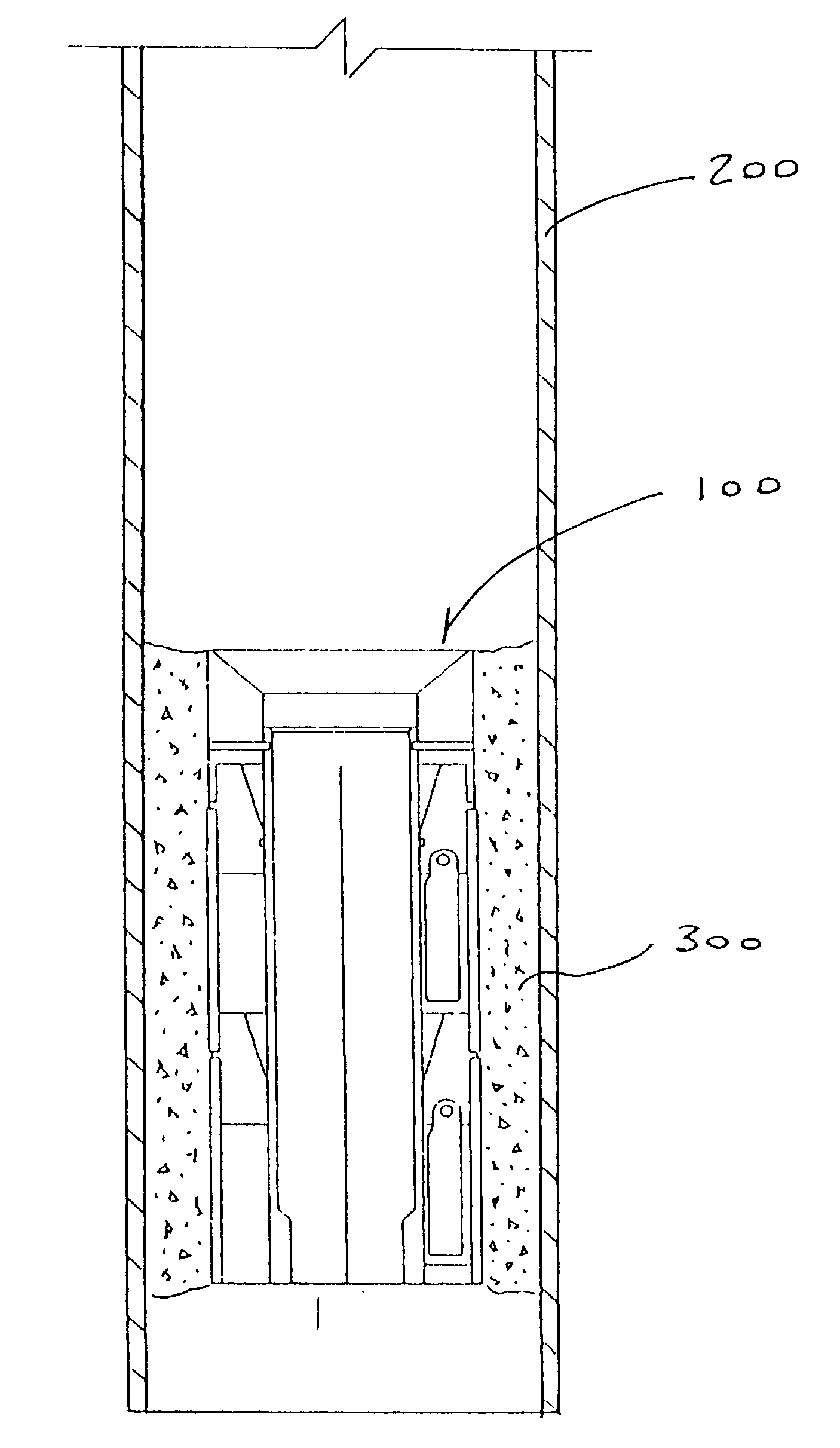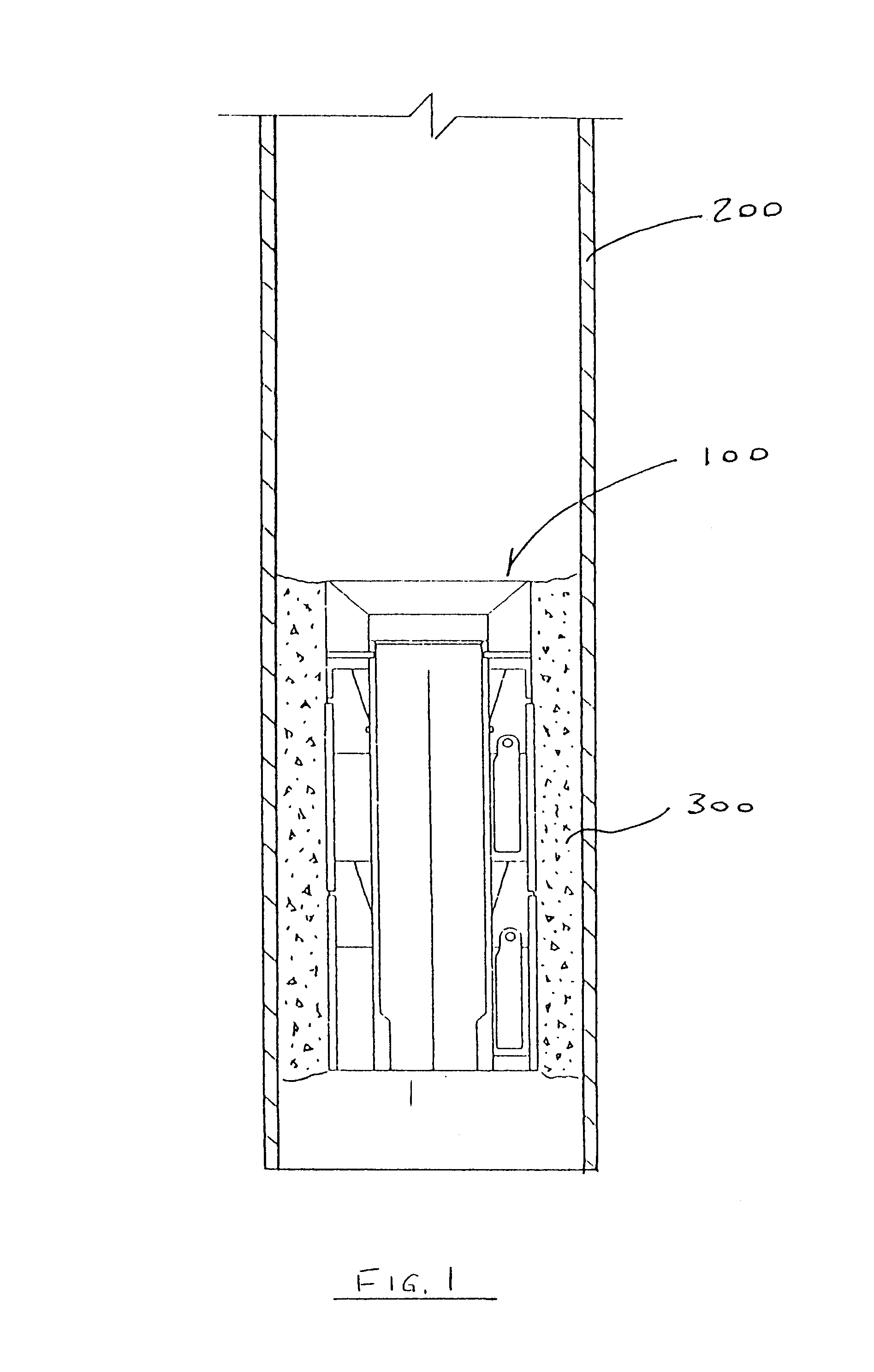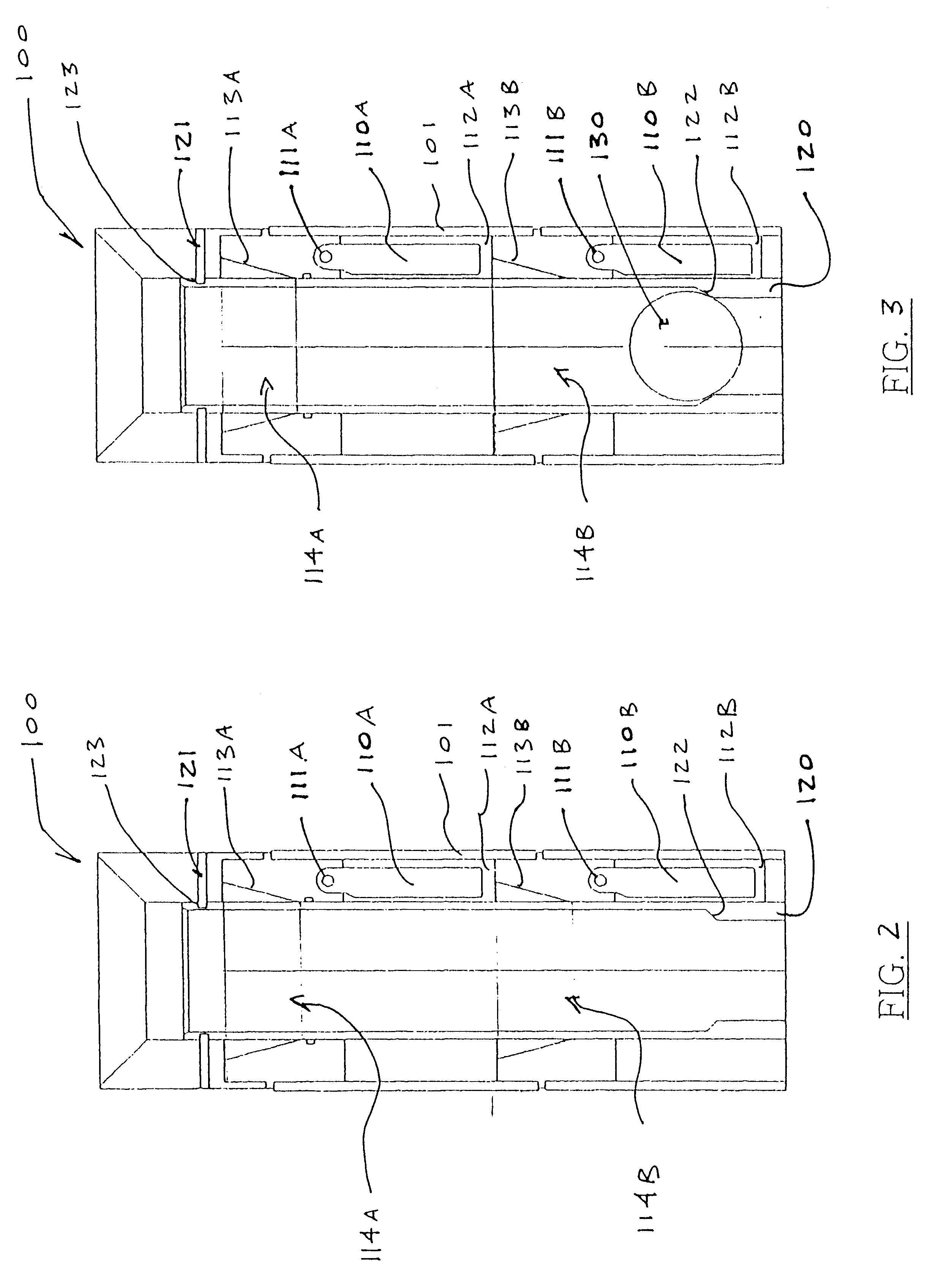Float collar
a technology of float collars and float plates, which is applied in the direction of drilling casings, drilling pipes, and accessories for wellbores, etc., can solve the problems of wasting valuable time and resources, affecting the drilling effect, so as to achieve the effect of saving time and resources
- Summary
- Abstract
- Description
- Claims
- Application Information
AI Technical Summary
Benefits of technology
Problems solved by technology
Method used
Image
Examples
Embodiment Construction
A description of certain embodiments of the present invention is provided to facilitate an understanding of the invention. This description is intended to be illustrative and not limiting of the present invention. The preferred embodiment of the float collar of the present invention will be described with respect to oil well casing installation operations. However, it is intended that the present invention may be utilized with any tubular member being run in and cemented to a wellbore.
With reference to FIG. 1, apparatus in accordance with the present invention comprises a float collar assembly 100 encased in cement 300 at the lower end of tubular member 200. Tubular member 200 may be a casing liner or sub-sea casing, however, it is intended that the present invention may be utilized with any tubular member being run in and cemented to a well bore.
With reference to FIG. 2, the float collar assembly 100 of the present invention comprises a housing 101, two flapper valve assemblies 114...
PUM
 Login to View More
Login to View More Abstract
Description
Claims
Application Information
 Login to View More
Login to View More - R&D
- Intellectual Property
- Life Sciences
- Materials
- Tech Scout
- Unparalleled Data Quality
- Higher Quality Content
- 60% Fewer Hallucinations
Browse by: Latest US Patents, China's latest patents, Technical Efficacy Thesaurus, Application Domain, Technology Topic, Popular Technical Reports.
© 2025 PatSnap. All rights reserved.Legal|Privacy policy|Modern Slavery Act Transparency Statement|Sitemap|About US| Contact US: help@patsnap.com



